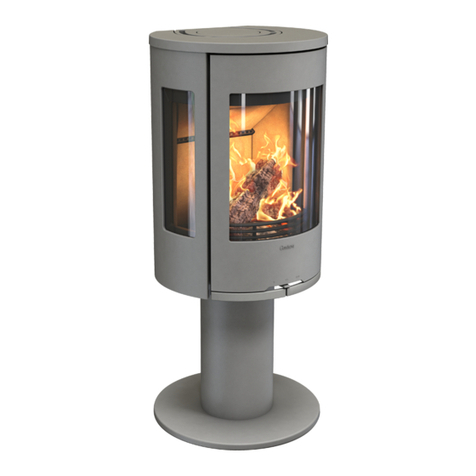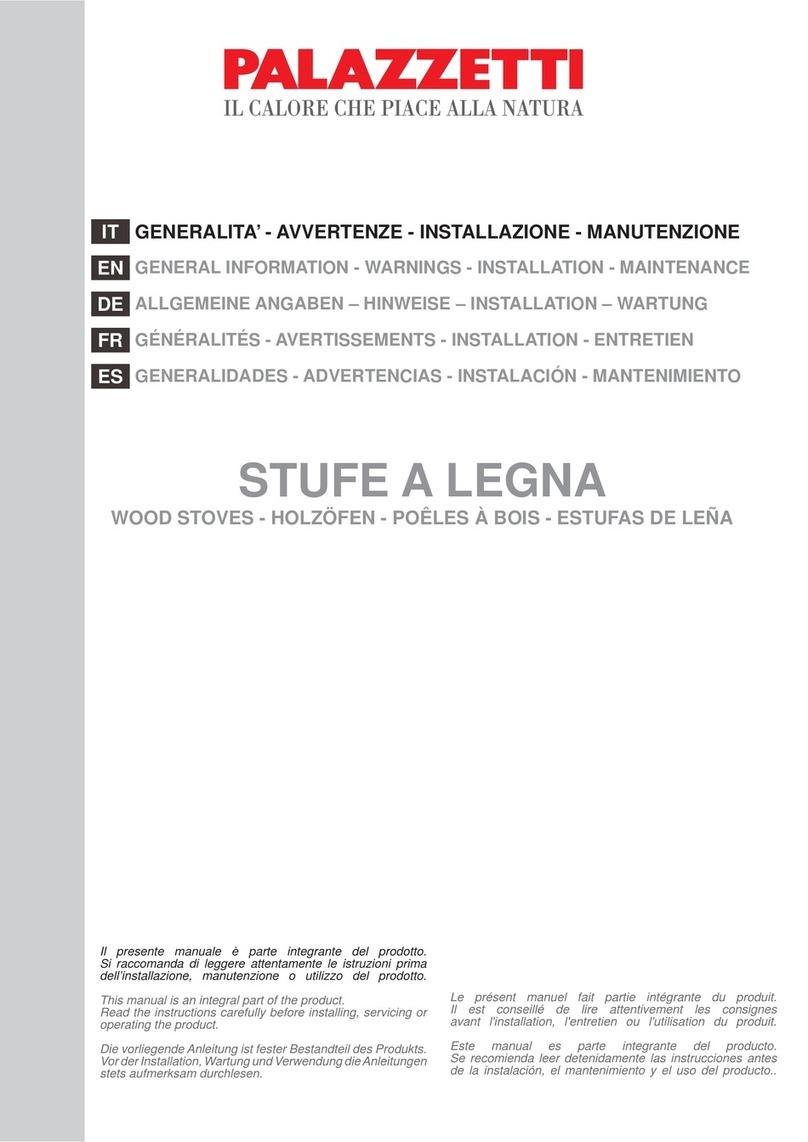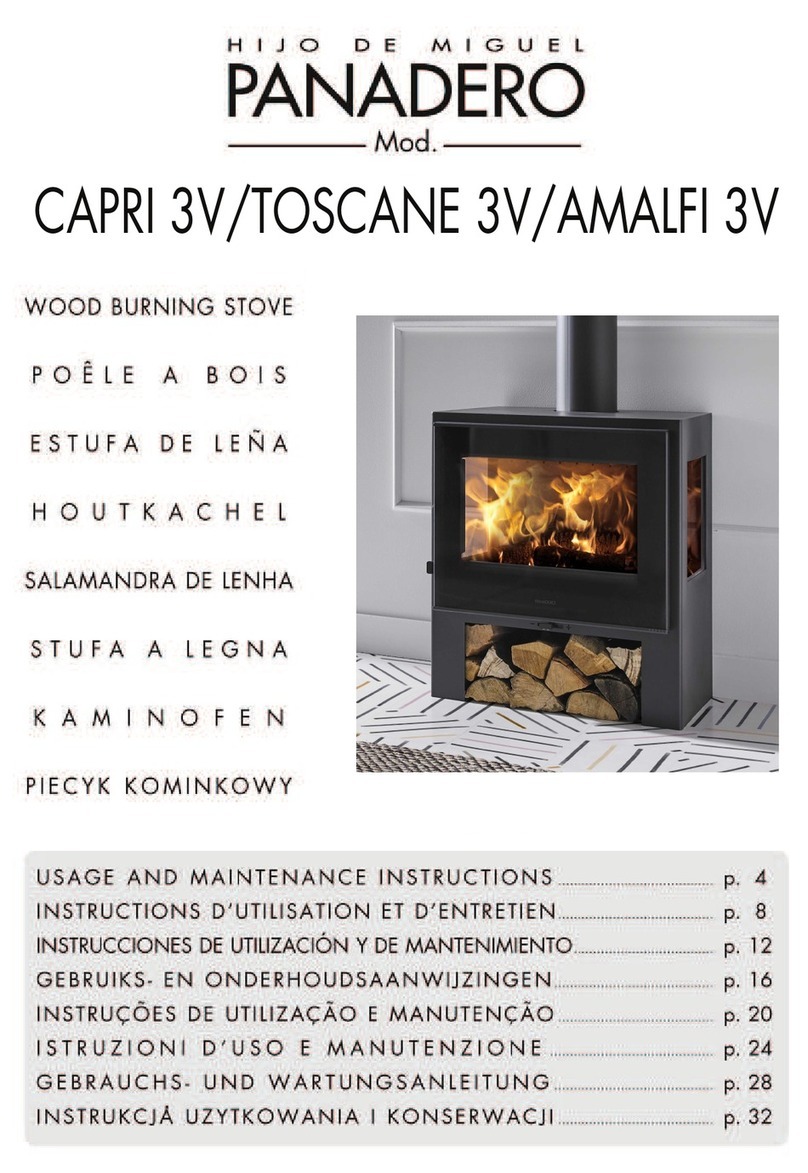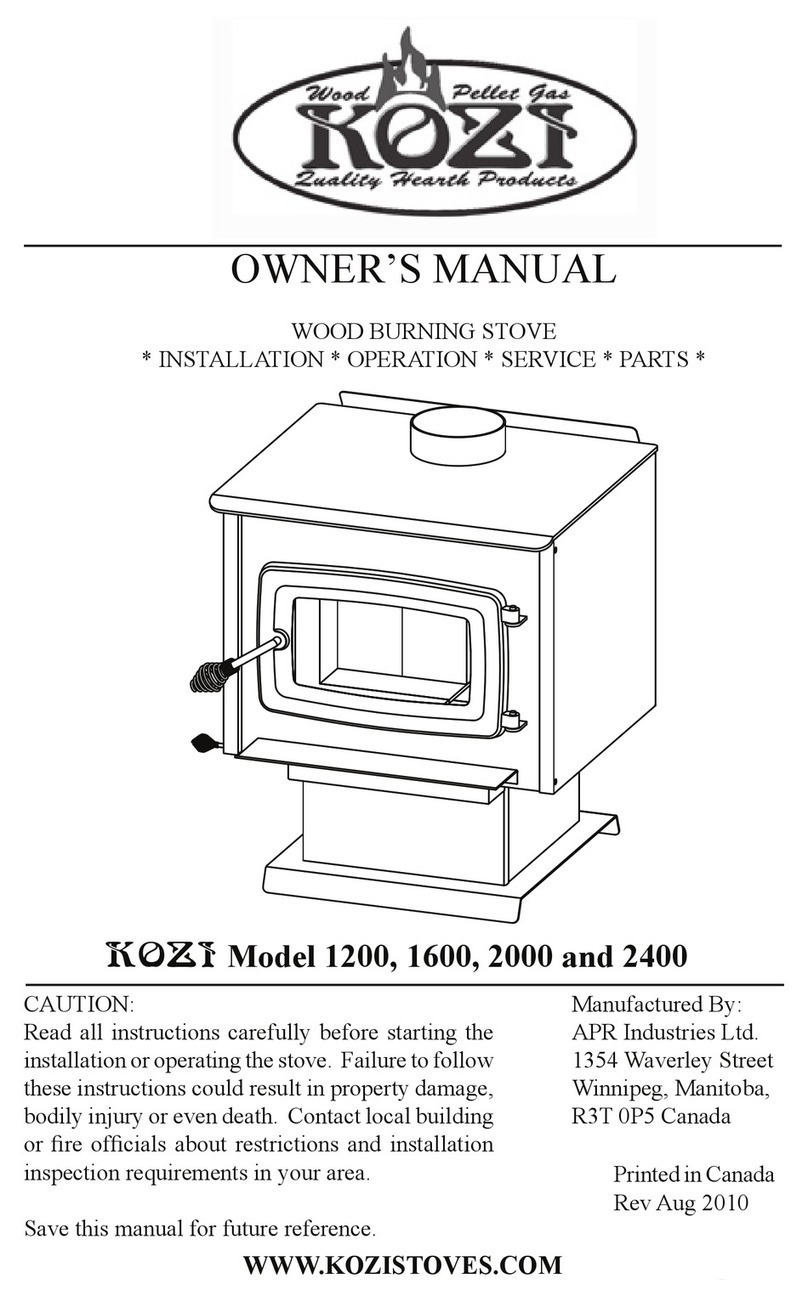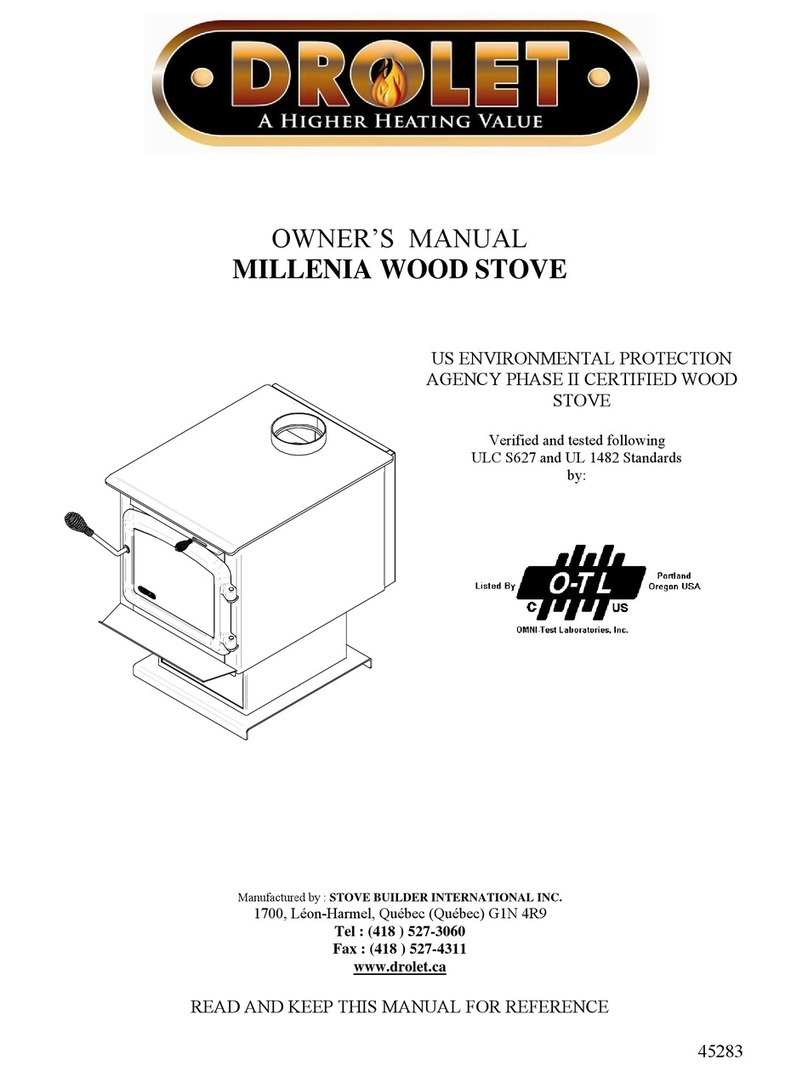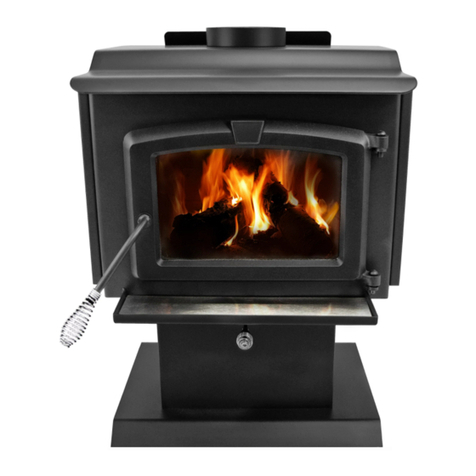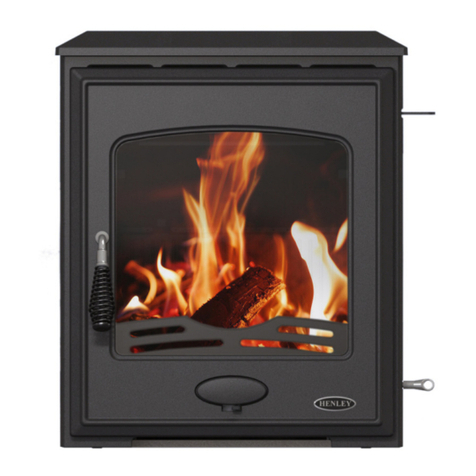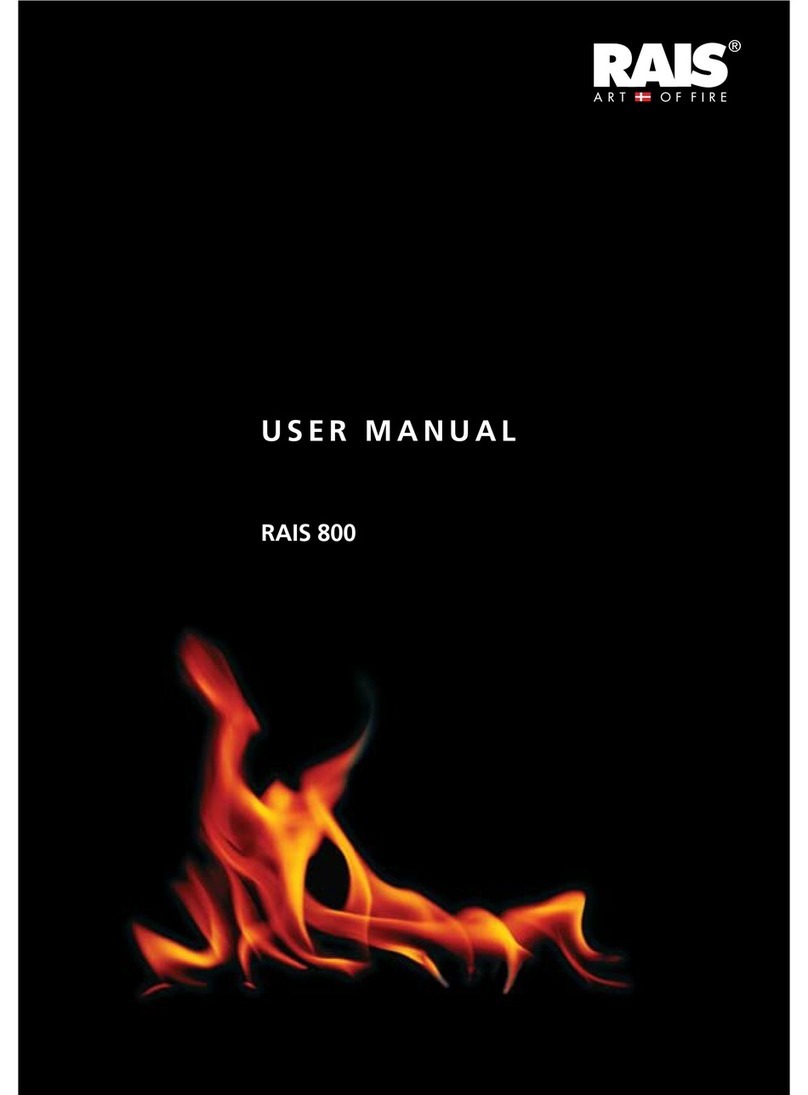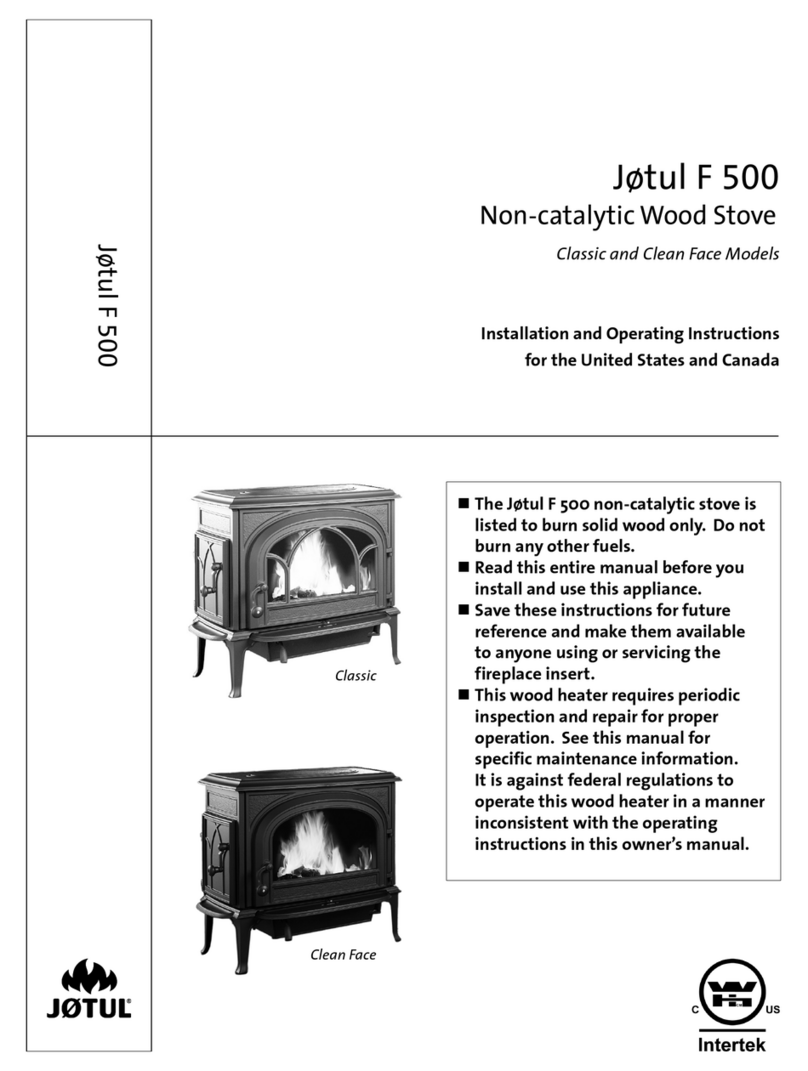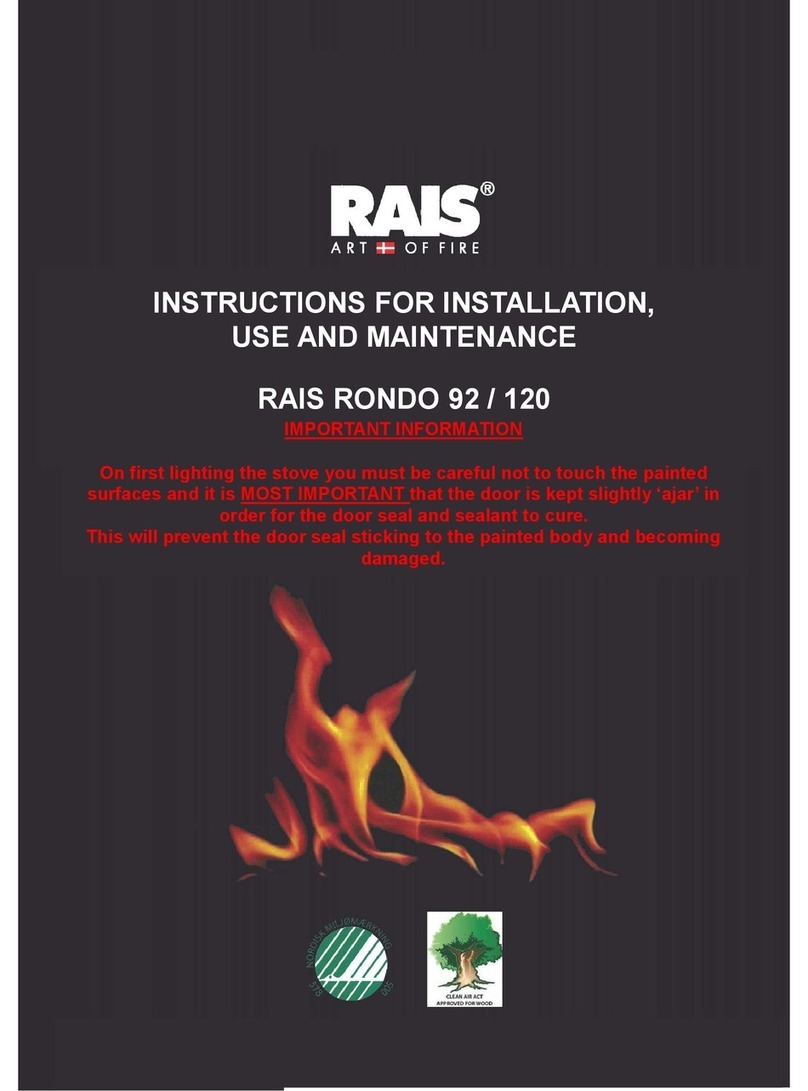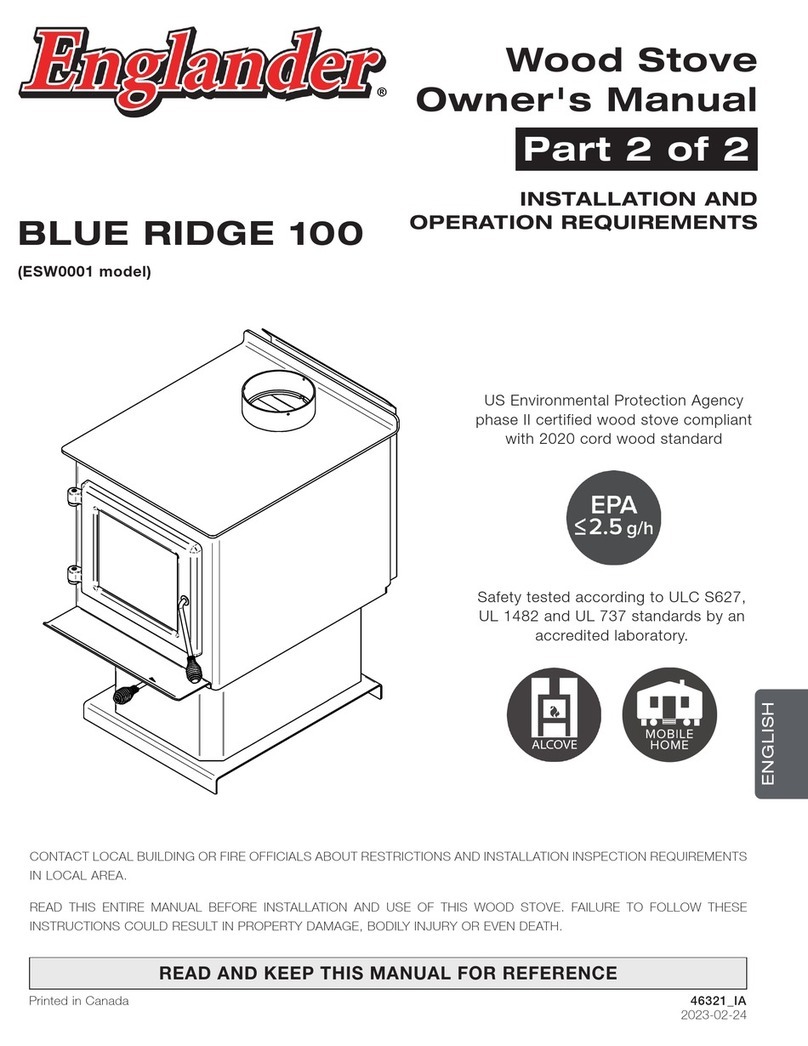Operating instructions
BASIC INFORMATION
THE DOOR HANDLE
The door is opened by pulling forward on the lower part of the
handle. Hold the handle in this forward position when shutting
the door, finally pushing it back to vertical to lock the door.
HEAT OUTPUT CONTROL
This control has a sliding action. Pull the knob out to increase
the heat output and push it in to decrease the fire. Shutting a
high fire down rapidly by starving it of air will result in undesir-
able emissions. For this reason, Logaire woodfires are
designed to settle down to lower heat outputs comparatively
slowly.
OVERNIGHT BURNING
Early stove designs starved the fuel of air to achieve long
burn times, creating over-rich fuel/air mixtures and emitting
pollutants. Modern designs avoid pollution by eliminating air
starvation. While this might seem to rule out overnight burn-
ing, it can be achieved with suitable fuel. Hardwood fuels give
longer low-burn times than softwoods, and thick pieces of fuel
burn longer than thin ones.
FAN OPERATION IF (FITTED)
Using the fan, except when the fire is set to a LOW burn, will
improve the heating efficiency and distribution of warm air in
the room. Select the high or low fan speed as desired.
ESSENTIAL ADVICE
Correct installation, the use of only DRY wood and adherence
to the following instructions will ensure satisfactory perfor-
mance.
WARNING: MAKE SURE THE MINIMUM HEATER-TO-
WALL DISTANCES SHOWN ON PAGES 3 AND 4 ARE
ALWAYS MAINTAINED BETWEEN THE HEATER AND ANY
HEAT SENSITIVE ITEMS. (FURNITURE, DRAPES, ETC.)
WARNING: DO NOT STORE FUEL WITHIN THE HEATER
INSTALLATION CLEARANCES.
WARNING: DO NOT USE FLAMMABLE LIQUIDS OR
AEROSOLS OR PLACE THESE IN THE VICINITY OF THIS
APPLIANCE WHEN IT IS OPERATING.
WARNING: THIS APPLIANCE MUST NOT BE USED AS AN
OPEN FIRE.
LIGHTING UP
CAUTION: THIS APPLIANCE SHOULD BE MAINTAINED
AND OPERATED AT ALL TIMES IN ACCORDANCE WITH
THESE INSTRUCTIONS
Pull the heat output control fully to the hot position.
Crumple up several double sheets of newspaper and place
them in the centre of the firebox. Build a pyramid of thin, dry
kindling wood on the paper with some heavier pieces on top.
Light the paper at the bottom and leave the door slightly ajar
until the kindling has ‘caught’, then latch the door shut firmly.
WARNING: DO NOT USE FLAMMABLE LIQUIDS OR
AEROSOLS TO START OR REKINDLE THE FIRE.
WARNING: ALWAYS MOVE THE AIR CONTROL TO THE
OPEN POSITION (TO THE RIGHT) BEFORE OPENING THE
FIRING DOOR.
When the kindling is well alight, open the door slowly and add
some larger pieces of wood. Do not throw fuel pieces into the
firebox as this may damage the top baffle and the insulating
boards or firebricks.
Close and latch the door firmly.
Move the heat output control away from the maximum posi-
tion only after the fire is well established. A new woodfire
should not be run at higher than half setting beyond the first
30 minutes until it has been used for a total of 8 hours. Once
fully ‘run in’, we recommend running at full heat for up to one
hour after lighting as this will minimise creosote build-up in the
flue. The control can then be set wherever desired.
The special high temperature paint on the firebox will emit
some smoke as it cures during the first hour or so of running.
This is quite normal.
CAUTION: THIS APPLIANCE SHOULD NOT BE
OPERATED WITH A CRACKED GLASS
Operating hints for clean burning
and best efficiency
FUEL: USE ONLY WOOD THAT HAS BEEN AIR DRIED IN A
SHELTERED WELL VENTILATED STACK, PREFERABLY
FOR AT LEAST 12 MONTHS. If moist fuel must be used, add
it only to a really hot fire, mixing it with a large proportion of
dry fuel. In Clean Air Zones, only wood may be used as fuel,
and it must have a moisture content not greater than 25%
(measured on a dry weight basis, in line with ECan’s rule AQL
5).
•Do not burn driftwood as salt will corrode the woodfire and
flue.
CAUTION: THE USE OF SOME TYPES OF PRESERVATIVE
TREATED WOOD AS FUEL CAN BE HAZARDOUS.
•Add fuel reasonably often. A large fuel load placed on a
dying fire can drop combustion temperatures undesirably.
•Avoid large smouldering fires. A small intense fire is more
efficient.
•Move the heat control to maximum for a minute or so and
turn off the air circulating fan (if fitted) before opening the
door on a low burning fire. This will clear away any fumes in
the firebox.
•Always open the door SLOWLY, and close and latch it shut
securely again as soon as possible after re-loading.
•When loading fuel, place the pieces of wood in a front-to-
back direction to ensure good air access and the cleanest
possible burning.
•Load fuel carefully to avoid damage to the insulating
boards, firebricks or top baffle.
•If smoke wafts into the room from a fully established fire
while the door is open, first check that make-up air can flow
freely into the room to replace the air passing up the flue.
(See box below).
•Then check that the flue is not obstructed in any way, partic-
ularly by the rain cap being too close to the end of the flue.
(See the flue cleaning requirements in the Maintenance
section, page 7). If these checks do not uncover the fault,
add an extra length of flue (bracing it, if necessary) to coun-
teract the down draught effects caused by roof shape, near-
by buildings, hills or trees.
•Switch off the circulating fan (if fitted) when the fire is burn-
ing at low heat outputs. Use only the slow fan speed at
medium heat output, moving to the higher speed(s) only
when full heat output has been reached.
•Adjust the door to eliminate any minor leakage. (See MAIN-
TENANCE - page 7). Serious leakage will require a new
door seal.
REMEMBER, FOR THE FIRE TO DRAW PROPERLY, AIR
MUST BE ABLE TO ENTER THE ROOM WHERE YOUR
WOODFIRE IS INSTALLED. YOU MAY HAVE TO LEAVE A
DOOR SLIGHTLY OPEN AND PERHAPS A WINDOW
6


